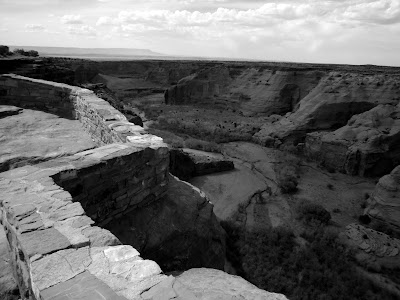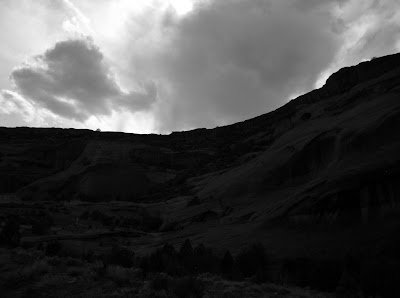
In the midst of the Civil War, the U.S. military decided to move the Navajo people forcibly from their traditional homeland to a tiny reservation on the high plains of east-central New Mexico called Bosque Redondo near Fort Sumner [where Billy the Kid would eventually be shot and buried].

The job went to Col. Kit Carson, who broke the Navajo resistance with a series of military raids then herded the people in large groups across distances of 300-500 miles, depending on the route, in what became known as The Long Walk.
From 1864 to 1868 over 8,000 Navajo's attempted to live at Bosque Redondo. It was a failure. Many starved to death. It is estimated up to a fifth of the Navajo population died en route or in the camp.

The Navajo leader at the time was a man called Barboncito [Little Beard -- what the Navajo called a 'mustache' ], a noted spiritual leader.
In 1868 Barboncito and other Navajo leaders traveled to Washington D.C to meet with President Andrew Johnson to determine their future.
A peace commission led by William Tecumseh Sherman would decide their fate.
Unknown to the Navajo's, Sherman had already learned of their plight and had decided to let them return to their homeland.
Their 'homeland' was an area near the Arizona/New Mexico border, an area today called Chinle, Arizona.
Specifically, Canyon de Chelly [pronounced 'shay'].
I left Ganado, Arizona for Chinle. It is a desolate and dusty road.



However, the desert gives way to the small town of Chinle.
Just beyond Chinle at the end of town lies Barboncito's homeland: Canyon de Chelly.


There is a visitor's center which I recommend. From the visitor's center you can take the North Rim drive or the South Rim drive. I drove south.
There are multiple overlooks and at each overlook you will find Navajo artists selling their artwork and jewelery. I blew a hundred dollars easily at these stops so beware.


The drive is amazing.









Much of the canyon floor is off limits because the Navajo's still live and work the canyon. You can hire a Navajo guide or you can take the White House Trail to the bottom which is guide free and is the only trail you can take yourself.
It is a hike of about 500 feet down. As I have mentioned before, if you are not a regular hiker or afraid of heights you might want to reconsider it.
Personally I never felt I was in danger going down or up but it is a strenuous hike so if you do go TAKE WATER, especially in summer!

[Don't forget you can click on any photo to enlarge]




Keep in mind you do have to share the trail...








Keep in mind...what goes down...must come up.

The arrows point to people on the trail down...click to enlarge.








Once you reach the canyon floor...you might consider to head back up, but don't. What you think is the canyon floor actually isn't...for just ahead is a cave....


...a cave that will take you back in time and lead you to something even more wondrous then what you have seen so far.

...go... go into the light.....
TO BE CONTINUED....

1 comment:
The first time I went down with my family, we got caught at the White House Ruins because of a flash flood. We would have been stranded but a tour group demanded that he take us. He drove this huge truck. We drove into the flood and out ran it, but there was another flood coming down another canyon and if we didn't get to the ranger station, we'd be overcome by both floods and well ...
Tséyi mean "canyon" but breaks down to in the rocks.
My grandmother took a trail (not the one you took) to get some peaches that were grown down there. Tséyi was famous for their peaches. She put them in her pockets but had to climb up on the Anasazi toe hold trail to come out the canyon. She lost all those peaches.
Looks like you had a nice visit. :)
Post a Comment